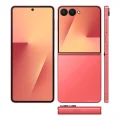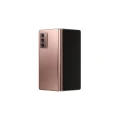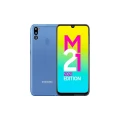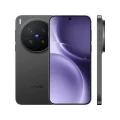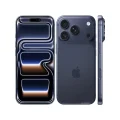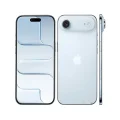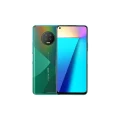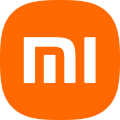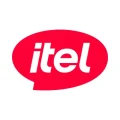- Home
- All Products
- Samsung
- Samsung Galaxy M13
Samsung Galaxy M13




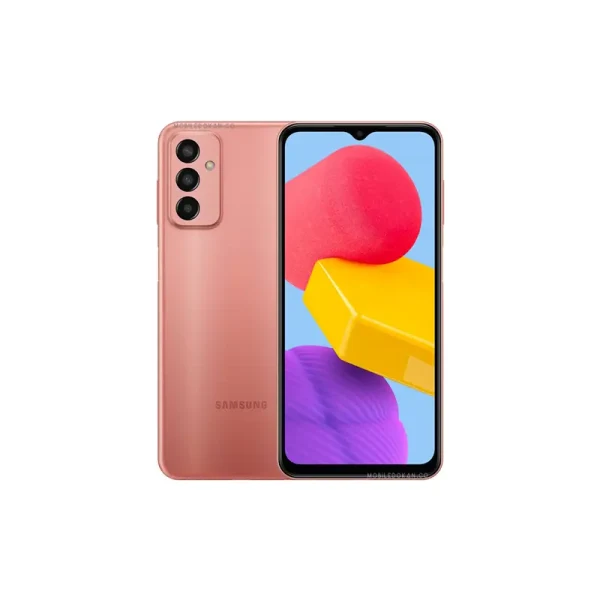
-
Battery: Li-Po 5000 mAh
-
RAM: 4GB, 4GB
-
Storage: 64GB, 128GB
-
Display: PLS LCD, 6.6 inches
-
Camera: Rear 50 MP+5 MP+2 MP, and Front 8 MP
-
OS: Android 12, One UI Core 4.1
Full Specifications
Price
| Official | 14499 BDT 4GB/64GB Approx. |
General
| Model | Samsung Galaxy M13 |
| Announced | 2022, May 27 |
| Released | 2022, July 01 |
| Status | Available |
Design
| Dimensions | 165.4 x 76.9 x 8.4 mm (6.51 x 3.03 x 0.33 in) |
| Weight | 192 g (6.77 oz) |
| SIM SIM (Subscriber Identity Module) is a small card that contains mobile network subscriber's account information. This allows the phone using the card to attach to a mobile network. The SIM card is most commonly associated with GSM and UMTS mobile networks. Moving a SIM card from one phone to another allows a subscriber to switch mobile phones without having to contact their mobile network carrier. SIM cards can also be used by a phone to store limited amounts of data, such as phone numbers and text messages. |
Dual SIM (Nano-SIM, dual stand-by) |
| Colors |
Deep Green, Orange Copper, Light Blue |
Display Specification
| Display Type Display Technology => A number of display technologies and types used in mobile phones => TFT (Thin Film Transistor), IPS (In-Place Switching), OLED (Organic Light Emitting Diode), AMOLED (Active-Matrix Organic Light-Emitting Diode), Super AMOLED (an even advanced version of AMOLED), Resistive Touchscreen (Resistive touchscreens contain two layer of conductive material with a very small gap between them which acts as a resistance), Capacitive Touchsceen (Capacitive touchscreen technology consists of a layer of glass coated with a transparent conductor) | PLS LCD |
| Size | 6.6 inches, 104.9 cm2 |
| Resolution | 1080 x 2408 pixels, 20:9 ratio |
| Pixel Density Pixel Density (PPI) is refers to the concentration of pixels on a particular display, measured in pixels per inch (ppi). Pixel density is calculated by dividing the diagonal pixel resolution of a display by its diagonal size, higher pixel density better display quality. | 400 ppi density |
| Features | 82.5% screen-to-body ratio |
Platform
| Operating System OS => Every computer system run on a base software called Operating System (OS). Operating System controls all basic operations of the computer (such as smartphone, PDAs, tablet computers and other handheld devices). The Operating System allows the user to install and run third party applications (apps), apps are used to add new functionality to the device. | Android 12, One UI Core 4.1 |
| Chipset Chipset is a group of integrated circuits designed to perform one or a more dedicated functions, often with real time computing constraints, Popular smartphones are equipped with more advanced embedded chipsets that can do many different tasks depending on their programming. | Exynos 850 (8nm) |
| CPU CPU (Central Processing Unit) mostly known as processors, CPU processes instructions in order to carry out certain functions that make your device operate properly. Processors are often described as the brain of computers, smartphones and tablets, Smartphones and tablets rely on processors to carry out their every task, Processors are an incredibly important factor in selecting any type of computing device, including your smartphone. | Octa-core (4x2.0 GHz Cortex-A55 & 4x2.0 GHz Cortex-A55) |
| GPU GPU (Graphics Processing Unit) is a single-chip processor designed to rapidly manipulate and alter memory to accelerate the creation of images in a frame buffer intended for output to a display, This includes things such as lighting effects, object transformations, and 3D motion. | Mali-G52 |
Main Camera
| Camera Setup | Triple |
| Resolution |
50 MP, f/1.8, (wide), PDAF 5 MP, f/2.2, 123˚ (ultrawide) 2 MP, f/2.4, (depth) |
| Features |
LED flash, panorama, HDR |
| Video | 1080p@30fps |
Selfie Camera
| Camera Setup | Single |
| Resolution |
8 MP, f/2.2, (wide) |
| Video | 1080p@30fps |
| Features | HDR |
Network & Connectivity
| Technology | GSM / HSPA / LTE |
| Speed | HSPA, LTE |
| Wi-fi Wi-Fi is a popular wireless networking technology using radio waves to provide high-speed network connections that allows devices to communicate without cords or cables, Wi-Fi is increasingly becoming the preferred mode of internet connectivity all over the world. | Wi-Fi 802.11 a/b/g/n/ac, dual-band |
| Bluetooth Bluetooth is a wireless communications technology for exchanging data between mobile phones, headsets, computers and other network devices over short distances without wires, Bluetooth technology was primarily designed to support simple wireless networking of personal consumer devices. | 5.0, A2DP, LE |
| NFC NFC (Near field communication) is a set of standards for smartphones and similar devices to establish peer-to-peer radio communications with each other by touching them together or bringing them into proximity, usually no more than a few inches. | Yes |
| Positioning |
GPS, GLONASS, GALILEO, BDS |
| FM Radio | No |
| USB | USB Type-C 2.0 |
| 2G Network |
GSM 850 / 900 / 1800 / 1900 - SIM 1 & SIM 2 |
| 3G Network |
HSDPA 850 / 900 / 2100 |
| 4G Network |
1, 3, 5, 7, 8, 20, 28, 38, 40, 41 |
Battery
| Battery Type Battery Type => Cell phones run on various kinds of batteries depending on the manufacturer, phone size or shape and features. There are basically four types of cell phone batteries => Lithium Polymer, Lithium Ion, Nickel Metal Hydride and Nickel Cadmium. | Li-Poly (Lithium Polymer) |
| Capacity Battery Capacity is a measure (typically in Amp-hr) of the charge stored by the battery, and is determined by the mass of active material contained in the battery. The battery capacity represents the maximum amount of energy that can be extracted from the battery under certain conditions. | 5000 mAh |
| Removable | No |
| Charging |
15W wired |
| Wireless Charging Wireless Charging (Inductive Charging) uses an electromagnetic field to transfer energy between two objects. This is usually done with a charging station. Energy is sent through an inductive coupling to an electrical device, which can then use that energy to charge batteries or run the device. | No |
Multimedia
| Loudspeaker | Yes |
| Audio Jack | Yes |
Storage
| Card Slot Memory Card Slot is a special slot for inserting a memory card. Memory cards allow you to expand the phone's built-in memory, A memory card (sometimes called a flash memory card or a storage card) is a small storage medium used to store data such as text, pictures, audio, and video, for use on small, portable or remote computing devices such as mobile phones, mp3 players, digital cameras. | microSDXC (dedicated slot) |
| Internal Storage Internal Storage is a data storage space (flash memory) mostly used in smartphones, tablets and other electronic devices where operating system, apps, music, photos, videos, files and other user data Is stored. |
64GB 4GB RAM, 128GB 4GB RAM eMMC 5.1 |
Sensors
| Fingerprint | Yes (side-mounted) |
| Other Sensors | accelerometer, compass, Virtual proximity sensing |
About the Samsung Galaxy M13:
The Samsung Galaxy M13 is a budget-friendly smartphone launched by Samsung in May 2022 as part of its Galaxy M series. Designed to offer reliable performance and essential features, it caters to users seeking value without compromising on quality. The device sports a 6.6-inch Full HD+ PLS LCD display, delivering clear visuals suitable for daily use. Powered by the Exynos 850 chipset and available in 4GB or 6GB RAM variants, it handles everyday tasks efficiently.
The Galaxy M13 runs on Android 12 with One UI Core 4.1, providing a user-friendly interface. Its triple rear camera setup includes a 50MP main sensor, a 5MP ultra-wide lens, and a 2MP depth sensor, while the 8MP front camera caters to selfies and video calls. A standout feature is its substantial 6000mAh battery, ensuring extended usage, and it supports 15W fast charging. Additional features include a side-mounted fingerprint sensor, dual SIM support, and a dedicated microSD card slot for storage expansion.
Main Key Features:
- Display: 6.6-inch Full HD+ PLS LCD (1080 x 2408 pixels)
- Processor: Exynos 850 octa-core
- RAM & Storage: 4GB/6GB RAM with 64GB/128GB internal storage
- Expandable Storage: Up to 1TB via dedicated microSD slot
- Rear Cameras: 50MP (main) + 5MP (ultra-wide) + 2MP (depth)
- Front Camera: 8MP
- Battery: 6000mAh with 15W fast charging
- Operating System: Android 12 with One UI Core 4.1
- Security: Side-mounted fingerprint sensor
- Connectivity: Dual SIM, 4G LTE, Wi-Fi, Bluetooth 5.0, USB Type-C
Pros & Cons:
Pros:
- Long-lasting Battery: The 6000mAh battery ensures extended usage, ideal for heavy users.
- Expandable Storage: Supports microSD cards up to 1TB, providing ample space for media and apps.
- Decent Camera Setup: The 50MP main sensor captures detailed photos in good lighting conditions.
- User-Friendly Interface: Runs on Android 12 with One UI Core 4.1, offering a clean and intuitive experience.
- Affordable Pricing: Offers good value for money in the budget segment.
Cons:
- Performance Limitations: The Exynos 850 processor may struggle with heavy multitasking or gaming.
- Slow Charging: 15W fast charging is relatively slow, especially for a 6000mAh battery.
- Plastic Build: The plastic back may not feel as premium as glass or metal alternatives.
- No 5G Support: Limited to 4G LTE, lacking future-proofing for 5G networks.
- Bloatware: Comes with pre-installed apps that may not be useful to all users.
Opinions:
Users find the Samsung Galaxy M13 a good option in the budget segment. They appreciate its display quality, battery life, and camera features, though some note that its performance may be limiting for power users.
Explore Other Samsung Models
FAQs about Samsung Galaxy M13
Q: What operating system does the Galaxy M13 use?
A: The Galaxy M13 runs on Android 12 with One UI Core 4.1.
Q: Does the Galaxy M13 have a card slot for storage expansion?
A: Yes, it supports microSDXC for additional storage.
Q: What colors are available for the Galaxy M13?
A: The Galaxy M13 is available in Deep Green, Orange Copper, and Light Blue.
Q: Does the Galaxy M13 support fast charging?
A: Yes, it supports 15W wired charging.
Q: What are the camera features of the Galaxy M13?
A: The Galaxy M13 has a 50 MP main camera, 5 MP ultrawide camera, and 2 MP depth sensor. It also supports 1080p video recording at 30fps.
Q: Is the Galaxy M13 water-resistant?
A: No, the Galaxy M13 does not have water or dust resistance.
Give Your Review
Disclaimer Note
You can write your own disclaimer from APS Settings -> General -> Disclaimer Note.


